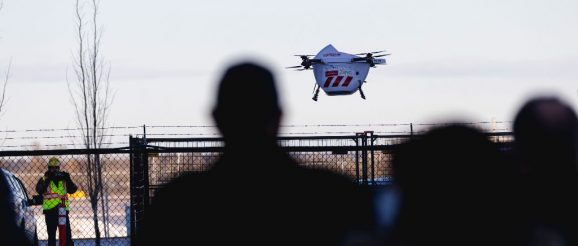‘A small city’: Building a hub for innovation at the Edmonton airport – Taproot Edmonton

The Edmonton International Airport (EIA) is building its business in a way that positions it at the heart of supporting and developing innovation in the region, says the woman in charge of making those big ideas happen.
“We’re really a small city. We have real estate, commercial developments, waterways, (and) we create our own energy. We also have our big aviation and cargo sectors, the core purpose of our airport,” Tara Mulrooney, vice-president of technology and innovation, told Taproot Edmonton’s innovation podcast, Bloom.
“That gives us this really great testbed where we can try things that any larger city or smart city could do, but in a smaller context.”
The level of innovation that EIA is tackling, with projects ranging from drone wildlife management to autonomous-vehicle airport security, is possible because it’s a highly regulated environment. Mulrooney said that is crucial because if something can work in the airport, it can work anywhere.
One of the priorities for the airport is sustainability, and looking at how to make the airport itself and its terminal carbon-neutral. The airport has its own natural gas cogeneration facility, which Mulrooney said has helped reduce the terminals’ electrical footprint by 50%.
It’s also in the midst of building a solar farm in Airport City, which will reduce carbon emissions further.
When it comes to determining where to invest and focus first, Mulrooney said it comes down to how best to grow economic prosperity in the region. In addition to the sustainability pillar, the airport also looks at manufacturing, agriculture, and technology.
“We’ve been in talks with an organization where they create a 5G or 4G Plus … simulation lab. And could we get that into our Airport City, which then would allow others to leverage that capability to expand their products and their services,” Mulrooney explained.
And in manufacturing, it’s looking at how the airport could use its free-trade zone to encourage businesses to bring in more raw materials and do light manufacturing. There are also opportunities to help agriculture companies connect with cargo providers and manufacturers to get products to the international market.
“It’s a lot about us being that … fulcrum to help connect different parts of the region, different municipalities, different businesses together,” she said.
